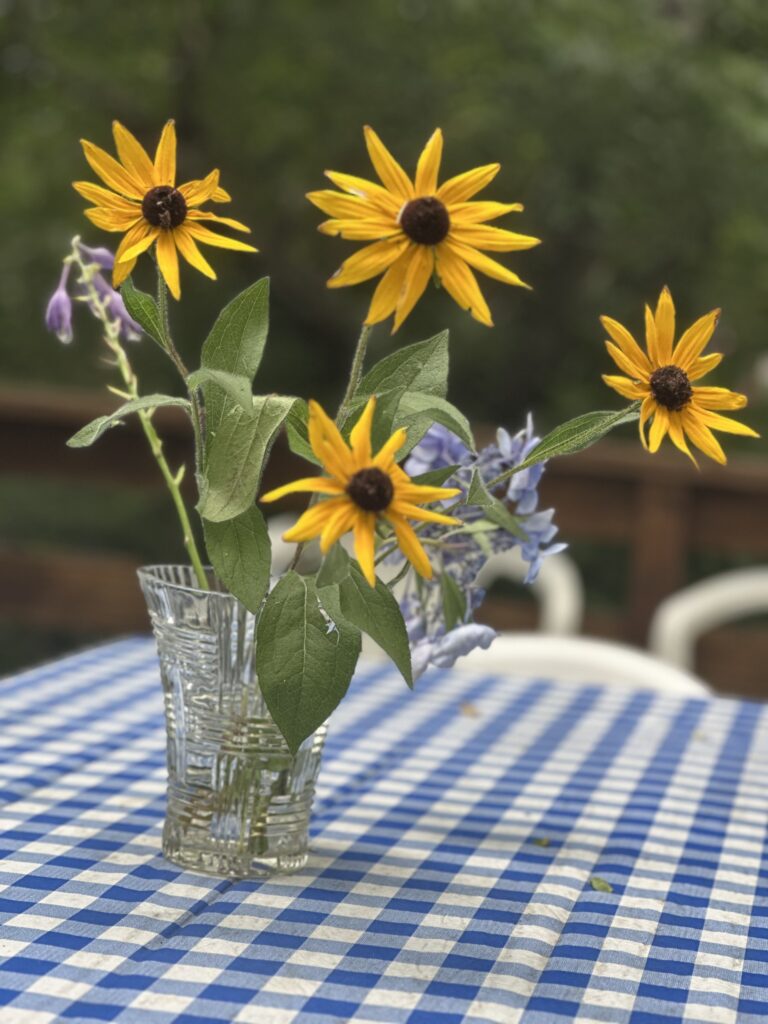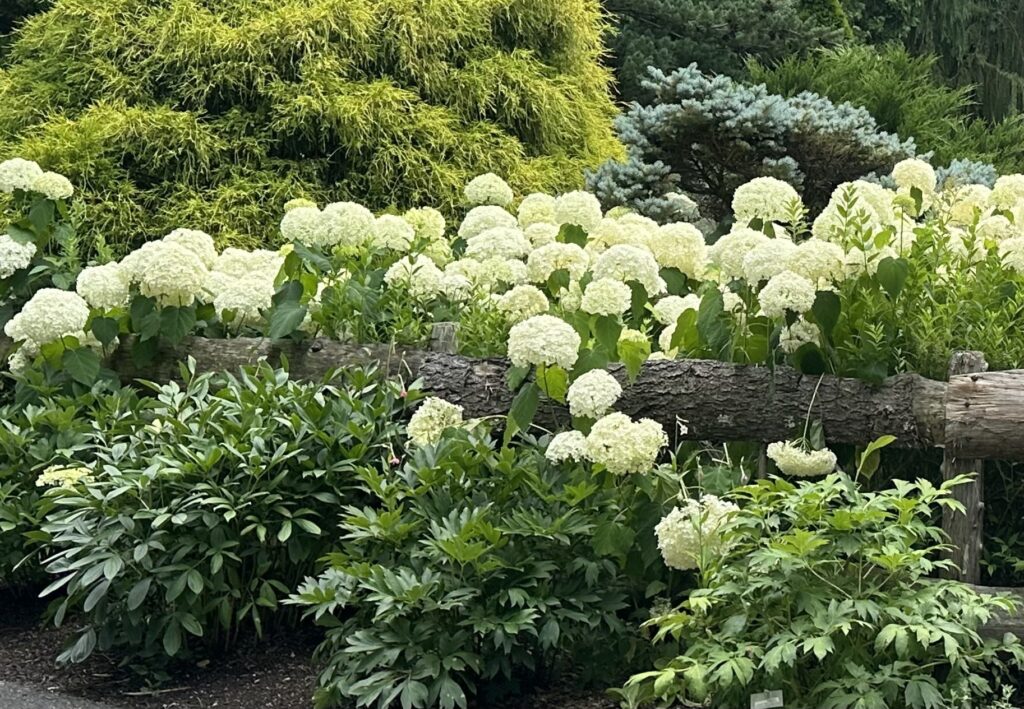Weather
We have experienced exceptionally hot weather and a lower-than-average rainfall in the month of July but, on the last day of July into August 1 we had a heavy rainfall. According to my rain gauge, we had 3½ inches of rain. Too late for many plants!
The heat has caused significant stress on landscape plants. You may have witnessed heat stress on perennials in your garden including leaf rolling, dry brown margins, leaf drop, diminished leaf size, wilting, sunscald, and blossom drop.
Plants need at least one inch of water per week in the absence of rainfall, but more water is required in times of heat stress. The most recent Acton Water District report indicates a change in watering restrictions back to one day a week.
Do not use fertilizer or any pest control products until the heat subsides. In the fall, consider replacing heat sensitive perennials with those more heat tolerant: Lavandula, Salvia yangi, Hemerocallis, Achillea millefolium, Echinacea, Rudbeckia, Penstemon, Gaillardia, Sedum, Phlox, or Coreopsis.

General tips
Finish pruning spring blooming shrubs and trees. Cut out spent flower stalks of daylilies and remove yellow foliage. Cut down any plant that is browned or mildewed. This month is a good time to dig up and divide bearded and Siberian iris, peonies and daylilies.
Dig and divide bearded iris. When replanting, select only the best rhizomes. Cut away and discard any portion of the rhizome that is not in peak condition. Work compost into the soil before planting the rhizomes. Plant about 10 inches apart with the top part of the rhizome exposed above ground level. Iris will grow best in at least six hours of sun.
Be on the lookout for wasp and hornet activity and nests; these insects can be plentiful and aggressive this time of the year.
Begin grooming houseplants that have been outdoors. Repot the plants that are pot-bound, cut back leggy shoots, and debug plants with sprays of insecticidal soap. Read the labels, as some plants are sensitive to insecticidal soap.
Planting trees too deeply may lead to tree decline and death. Planting recommendations now suggest making the planting hole three times as wide as the root ball width. The depth of the hole should only be as deep as the height of the root ball, measuring from where the roots flare out at the trunk to the bottom of the root ball.
Begin planning for fall bulb planting of spring flowering bulbs. The small bulbs are among the first plants to bloom after our long winters.
As fall approaches, plan a new garden. Experiment with different garden bed shapes, laying them out using a garden hose. Dig up the existing grass and decide on plants to add next spring.
Lawn renovation
If you are planning to renovate your lawn, particularly if it is subject to a lot of activity, select a grass seed mixture containing a good proportion of perennial ryegrass. New ryegrass varieties are not only attractive in lawns, but quick to establish and have excellent wear tolerance when compared to bluegrass and fescue varieties.
The last week of August and the first two weeks of September are the best times to start a lawn. Soil is much warmer now than in the spring and grass seed will sprout faster and more evenly. Also, grass planted in late summer has twice as much time to establish itself before freezing weather turns it dormant.
However, if reseeding your lawn, keep in mind the current watering restrictions (see AWD restricts outdoor water usage).
Continue to mow the lawn at a height of 2½ to 3 inches. Mowing too short during hot weather may be detrimental to turf grass. In fact, cut back on lawn mowing when the lawn is browning and reduce mowing frequency on the areas which are still green.
Pruning Hydrangeas
Knowing the botanical name of the hydrangea you wish to prune will help in determining the time to prune. Basically, there are two groups of hydrangeas: those that produce flowers on the wood from the previous year (old wood) and those that produce flowers on the wood of the current year (new wood).

Pruning Old Wood Hydrangeas
Old wood hydrangeas include the following varieties:
- H. quercifolia (Oakleaf hydrangeas)
- H. macrophylla (Bigleaf hydrangeas)
- H. serrata (Mountain hydrangeas)
- H. petiolaris (Climbing hydrangeas).
Prune right after blooming as new buds develop in the late summer. Pruning out dead, diseased, or broken branches can be done at any time.
Pruning New Wood Hydrangeas
New wood hydrangeas include the following varieties:
- H. arborescens (Smooth hydrangeas)
- H. paniculata (Panicle hydrangeas).
Flower buds form on the current year’s growth. Prune in early spring to 12-18 inches or to the ground.
Author’s note: I prune my Hydrangea arborescens in the fall to about 12 inches, which saves me one task to do in the spring. It works.
Newer Varieties of Hydrangea
Some hydrangeas bloom on both old and new wood, such as Endless Summer (Hydrangea macrophylla ‘Bailmer’). For these, it’s better not to prune at all except for dead, diseased, or broken branches, which can be done at any time.
Judy Dembsey is the chair of environmental education and a member of the board of the Acton Garden Club.













